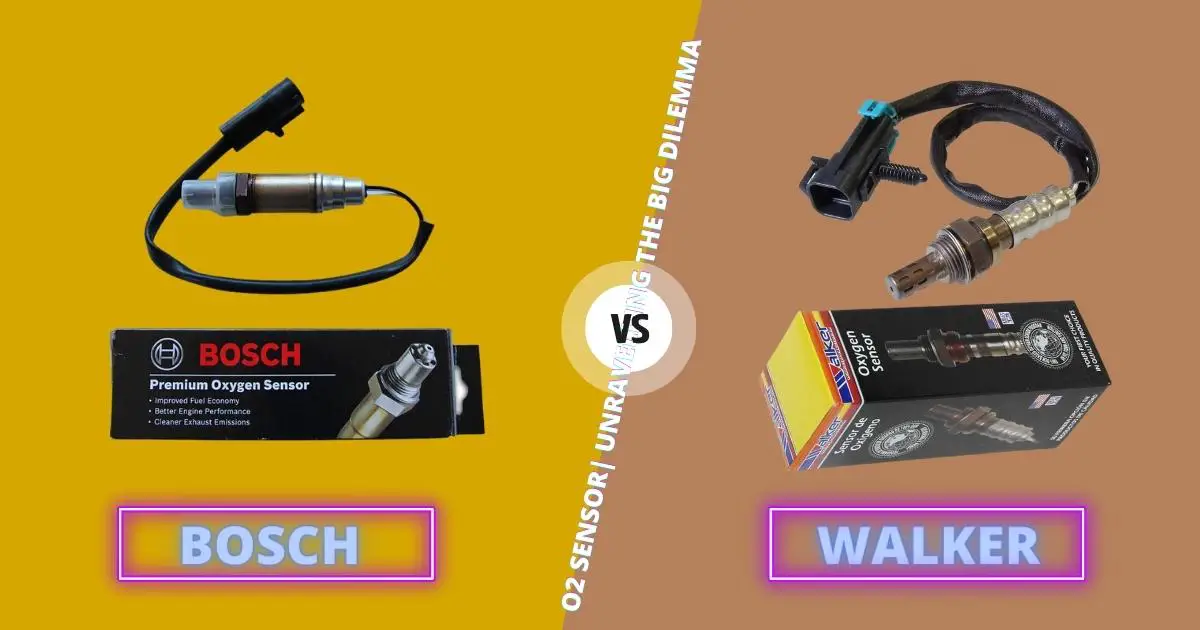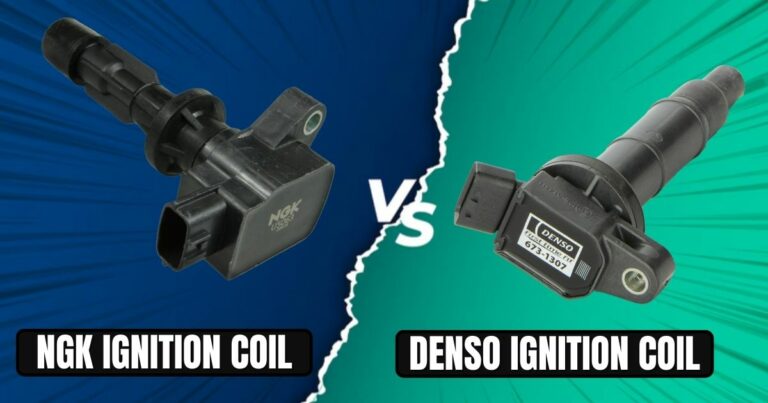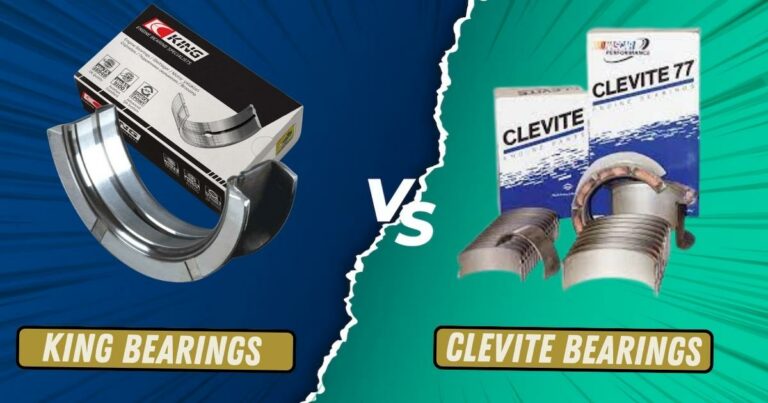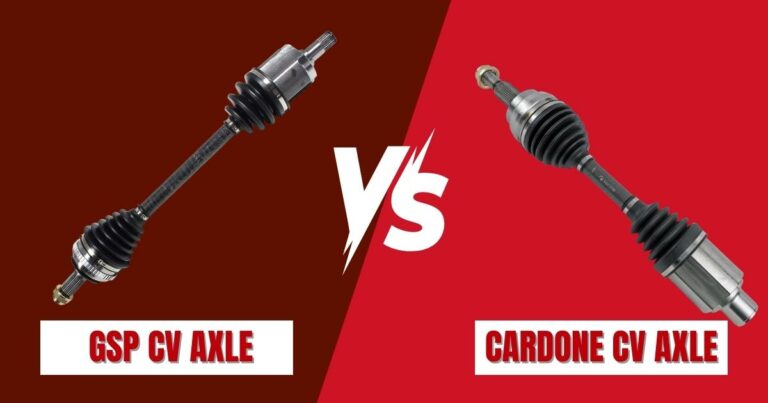Walker vs Bosch O2 Sensor | Unravelling the Big Dilemma
Oxygen sensors, often abbreviated as the O2 sensors, are instrumental in ensuring that modern vehicles operate efficiently, while also minimizing harmful emissions. However, not all O2 sensors are created equal, and the choice of a sensor can have a profound impact on a vehicle’s performance and environmental impact.
Among the numerous options available, the sensors offered by Walker and Bosch stand out as reputable contenders. In this comparison, we’ll seek to explain the attributes and distinctions that set apart Walker and Bosch O2 sensors to help you make an informed decision when it comes to enhancing the performance and environmental-friendliness of your vehicle.
Walker O2 Sensor Review
Walker is a well-established brand in the automotive industry known for producing a wide range of high-quality aftermarket automotive components, including O2 sensors. Walker’s O2 sensors are designed to meet the demanding requirements of modern vehicles, ensuring optimal engine performance and emission control.
Key Features and Characteristics of Walker O2 Sensors
Precise Monitoring
Walker O2 sensors are designed to deliver accurate and real-time data to the vehicle’s Engine Control Unit. This precision enables the ECU to adjust the air-fuel mixture by optimizing combustion efficiency, which, in turn, enhances engine performance and fuel economy.
Variety of Sensor Types
Walker provides a diverse selection of O2 sensor types that cater to different vehicle needs. This range includes one-wire and two-wire unheated sensors, as well as heated sensors with three or four wires. This diversity allows vehicle owners and mechanics the flexibility to choose the sensor that aligns best with their specific vehicle requirements.
Heated vs Unheated Sensors
As we’ve mentioned, Walker offers a comprehensive range of O2 sensors, including both heated and unheated variants. The unheated version encompasses both one-wire and two-wire unheated O2 sensors. These sensors are suitable for specific applications where external heat sources, are typically found near the engine’s exhaust ports.
In contrast, Walker’s three and four-wire heated O2 sensors are designed with internal heaters to rapidly reach operational temperatures. The heated sensors are strategically placed downstream in the exhaust system to offer more precise temperature control. This accuracy makes them ideal for applications where precise monitoring and emissions control are essential, especially during cold starts.
Rapid Response
Walker O2 sensors are equipped with low-resistance, high-watt density heaters, which facilitate a rapid response. On average, the sensors can achieve their operating temperature in as little as twenty seconds. This swift warm-up time helps reduce cold start emissions, thereby enhancing their effectiveness in minimizing environmental impact during critical engine startup periods.
Planar Sensors
Walker’s planar O2 sensors employ a unique construction with bonded layers of zirconia and alumina. This design offers several advantages, including faster warm-up times due to their lower mass and direct contact between the heater and sensing element.
This construction helps ensure more precise monitoring of the air-fuel mixture, contributing to enhanced engine performance and emissions control. Walker’s planar sensors are a notable choice for those seeking efficient and responsive O2 sensors.
Air Fuel Ratio and Wideband Sensor
Walker’s O2 sensor lineup includes advanced options such as five-wire wideband sensors and four-wire air-fuel ratio sensors. Wideband sensors provide precise and continuous monitoring of the air-fuel mixture, which offers a broader and more accurate range of measurements. This allows the vehicle’s control unit to make rapid adjustments to fuel delivery and ignition timing in real time. As a result, the engine operates more efficiently, leading to improved performance and reduced emissions.
Universal vs. Direct Fit
Walker’s universal O2 sensors offer versatility as they can be adapted to various vehicle applications. However, they require splicing into the existing wiring harness, which may be more complex and time-consuming. Universal sensors are favored when a specific direct-fit option is unavailable or when a customized installation is preferred.
On the other hand, the direct fit sensors are tailor-made to fit specific vehicle makes and models. They come with connectors that directly match the existing wiring harness. This design not only simplifies the installation process but also reduces the risk of selecting the wrong part. Direct-fit sensors are often preferred for their convenience and compatibility with specific vehicles.
OE vs. Aftermarket
Walker offers both OE and aftermarket sensors to meet different customer needs. OE sensors are designed to meet the exact specifications of the original vehicle. While these sensors are considered the benchmark in terms of quality and compatibility, they are often more expensive.
Walker also specializes in aftermarket sensors, which provide a cost-effective alternative to OE sensors. These sensors are designed to match the quality and performance of OE sensors while being more budget-friendly.
Bosch O2 Sensor Review
Bosch is a globally recognized leader in automotive technology, which offers a comprehensive range of O2 sensors. Bosch’s commitment to cutting-edge technology and engineering excellence has firmly established its O2 sensors as a trusted choice in the automotive industry.
The brand’s extensive range of O2 sensors ensures compatibility with a wide spectrum of vehicles. Moreover, Bosch’s O2 sensors play a pivotal role in emissions control by ensuring compliance with stringent environmental regulations and fostering cleaner and more sustainable driving experiences.
Key Features and Characteristics of Bosch O2 Sensors
Enhanced Fuel Economy and Emissions Reduction
Bosch oxygen sensors are engineered to optimize the air-fuel mixture in the combustion process, leading to improved fuel economy. This precise regulation helps reduce harmful emissions, which makes vehicles more environmentally friendly.
Direct Fit with OE Connector
Bosch offers direct-fit oxygen sensors that come equipped with OE connectors. The OE connector helps ensure a seamless and hassle-free installation process by eliminating the need for modification or extra adapters.
Performance that Meets or Exceeds OE Specifications
Bosch takes pride in manufacturing oxygen sensors that not only meet but also surpass OEM specifications. This commitment to quality ensures that Bosch sensors provide consistent and reliable performance, ultimately enhancing the driving experience and environmental impact.
Accurate Monitoring
Bosch O2 sensors are engineered with advanced technology to provide precise and real-time monitoring of oxygen levels in exhaust gases. This data is crucial for optimizing the air-fuel mixture, thereby improving your engine performance and fuel efficiency.

Differences Between Walker vs Bosch O2 Sensors
Both Walker and Bosch have a dual presence as suppliers of both OEM and aftermarket oxygen sensors. This extensive reach allows them to serve the needs of both vehicle manufacturers and individual vehicle owners. When choosing between the two brands for an oxygen sensor replacement, consumers should consider factors such as;
Quality
Bosch’s extensive OEM heritage underscores its dedication to meeting strict quality standards for vehicle manufacturers. In addition, its renowned focus on advanced technologies ensures its oxygen sensors incorporate cutting-edge innovations, leading to improved performance and precision.
Furthermore, Bosch’s commitment to precision engineering and rigorous quality control processes ensures the consistency and reliability of its sensors. This, in turn, makes them highly dependable components in modern vehicles with advanced engine management systems.
While Walker also produces high-quality oxygen sensors, their primary focus may lean more toward providing dependable and cost-effective solutions for consumers. They aim to deliver sensors that perform well, and offer good value for money. The company offers a wide range of oxygen sensors to allow customers to find the right sensor for their specific needs and budget.
Durability
Bosch’s reputation for durability is grounded in its meticulous precision engineering and adherence to rigorous quality control standards. These sensors are built to withstand the harsh conditions of factory-installed components, which offers a level of resilience that inspires confidence.
Bosch’s commitment to incorporating advanced technologies and materials can further enhance the durability of its sensors. This helps ensure they stand up to the rigors of long-term use in a wide range of vehicles and operating conditions.
Similarly, Walker places a significant emphasis on the quality and reliability of their sensors, but they might not match Bosch’s durability. This is not to say that Walker’s sensors lack durability, but they do not match the meticulous precision engineering employed by Bosch.
However, for many consumers, Walker’s sensors still offer a satisfactory balance between quality and affordability, particularly for those with budget constraints.
Compatibility
Bosch provides a diverse lineup of oxygen sensors, designed to be compatible with various vehicles. Their extensive experience in the automotive industry means their sensors are typically well-suited for a wide range of applications. In addition, Bosch’s strong OEM heritage means their sensors are often used as factory-installed components in many vehicles.
Walker also offers a wide range of oxygen sensor options designed to fit a variety of vehicle applications. Furthermore, they often provide compatibility information to help customers choose the right sensor for their specific vehicle. This helps ensure that customers can find a suitable sensor for their particular make and model.
Pricing
When considering pricing, it’s crucial to factor in not just the initial cost but also the value for money. Generally, Walker is often recognized for offering competitively priced oxygen sensors. It aims to provide cost-effective solutions for vehicle owners and repair shops. This can make Walker an attractive choice for those on a budget.
Bosch is known for quality and reliability, and as such, its sensors may be priced somewhat higher. The premium pricing aligns with its track record of providing sensors that meet stringent quality standards and perform exceptionally well in various vehicle applications. This makes Bosch a preferred choice for those seeking dependable and long-lasting sensor solutions.
Frequently Asked Questions
Are Walker O2 sensors any good?
Walker oxygen sensors are often considered reliable and provide good value for money. Many vehicle owners and repair shops have had positive experiences with Walker sensors, finding them to be dependable and cost-effective solutions for maintaining proper engine performance. However, as with any automotive component, it’s important to ensure compatibility with your specific vehicle and follow proper installation and maintenance procedures to maximize the sensor’s performance and longevity.
How long does Walker oxygen sensors last?
The life expectancy of an oxygen sensor can vary, but a commonly recommended guideline is to check or replace heated oxygen sensors every 60,000 miles and unheated oxygen sensors every 30,000 miles. However, the actual sensor lifespan can be influenced by factors like driving conditions and sensor quality.
How many oxygen sensors do modern cars have?
Modern cars can have up to 6 or more oxygen sensors. That said, the exact number of oxygen sensors in a particular vehicle depends on factors like the make, model, and engine type, as well as the vehicle’s emissions control system.
Common configurations include two sensors (one upstream and one downstream of the catalytic converter) or four sensors (two upstream and two downstream, typically in V6 or V8 engines). Some vehicles may have additional sensors for specific purposes, such as optimizing fuel efficiency or monitoring individual cylinders.
Bosch vs Walker Oxygen Sensor- Is There a Winner?
When it comes to replacing oxygen sensors, it’s essential to choose the proper replacement that is compatible with your specific vehicle make, model, and engine type. In the comparison between Walker and Bosch oxygen sensors, it has become clear that both brands offer reputable options for vehicle owners and repair professionals.
Walker stands out for its cost-effective solutions and reliable performance, making it an attractive choice for those seeking dependable oxygen sensors without breaking the bank. On the other hand, Bosch brings a rich OEM heritage, advanced technologies, and precision engineering to the table, reflecting a commitment to quality and precision that benefits modern vehicles with advanced engine management systems.
At the end of the day, the choice between Walker and Bosch oxygen sensors ultimately comes down to individual needs and priorities. If cost-effectiveness and reliability are the primary concerns, Walker sensors are a strong contender. Conversely, if advanced features and cutting-edge technology are essential for your specific vehicle or application, then Bosch sensors may be the preferred choice.






